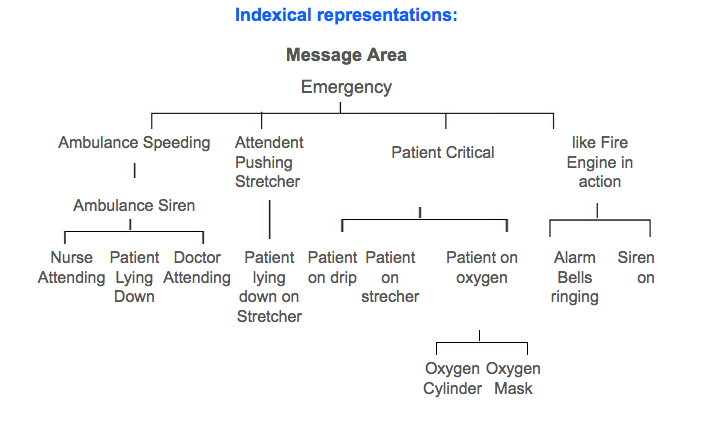.
Here the message area does not offer enough direct clues and hence the relationship has to be architectured indirectly using secondary devices. These message areas are usually concerned with the ones that are concept-based, or are related to ideas or expressions and are not easily translatable into a visual representation. The meanings of these message areas are to be conceived by means of other devices so that these, in turn, transpose their essence to the given representation. Also such representations can best be summed up as being the output of the user's conception of his familiarity with a given facility. The designer acts as a vehicle in interpreting the visualisation that has been perceived by the user. The design of the emerging symbol is obviously, thereby a construct of the images that the user is able to conceive about these message areas.
A viable method is, therefore, required to be formulated to understand the visualisation of these message areas into appropriate images through an interaction with the user in a manner such that it offers the essential semantic clues required for the final symbol. It is known that the human mind encodes the real world using concepts related to each other in terms of linked associations. "Our perceptions are structured into units corresponding to objects and its properties. These units may be generated into images that are experienced as quasi-pictorial, spatial entities". Clues are gathered from the verbal description of the message area as has been perceived by the user's simagery (it is assumed that the general user is much more comfortable and adept at interpreting his concepts of an idea through the verbal language rather than by means of drawing or illustrations). The user is also prompted to visualise the attributes of the message area through a classification of the message areas into its components, followed by a visualisation of their associations, and then link these up with similar images. These verbal descriptions are categorised as possible alternatives, and diagrammatically linked in terms of their spatial arrangement; an exercise that is expected to help in finding alternatives for representation of these message areas. By this method it is hoped that the user is also able to provide inputs that are culturally-derived and context-oriented, and at the same time allowing for a visualisation of the message areas that remains as close as possible to his perception.


